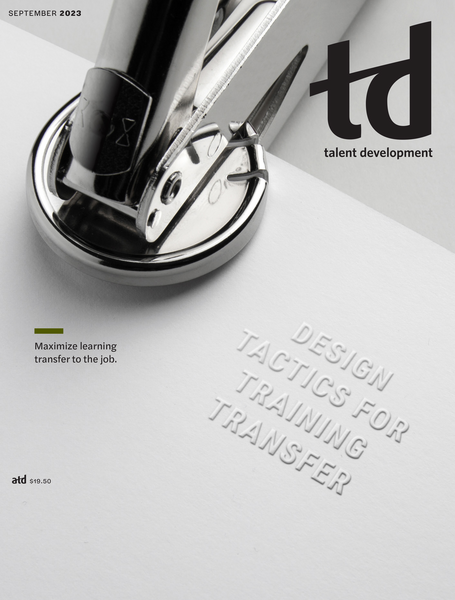TD Magazine Article
Numbers Don't Lie
There are stark differences in the training leaders and employees receive.
Fri Sep 01 2023

There are stark differences in the training that leaders and employees receive.
It's simple math, really: Most companies realize it's less expensive to upskill their employees than it is to hire new ones. According to the Monster article "Why People Leave Their Jobs," replacing workers costs between 75 percent and 200 percent of an employee's salary. But a recent CYPHER Learning report, The State of Corporate Learning and Development in 2023: Stuck in the Middle, reveals a discrepancy between employees' and managers' workplace development.
The report reveals that 88 percent of C-suite executives have the choice of when, where, and how they complete training; in comparison, companies offer those same choices to only 37 percent of entry-level employees.
Additionally, executives are almost three times more likely than their employees to call training "enjoyable." While the desire to upskill remains for employees below the C-suite level, 77 percent of the 4,000 respondents agreed that training shouldn't feel like a chore; 42 percent called workplace training "boring and unengaging;" and 36 percent of those surveyed went a step further, calling workplace training "death by PowerPoint."
"Employees clearly place high value on training, which is why it can help to attract top talent. In fact, employees rank training as high a priority as healthcare," says CYPHER Learning CEO Graham Glass. "But not all training programs are created equal. A system that delivers forgettable, generalized content, or doesn't keep workers competitive, is less valuable to them and the organization alike."
The report concludes that modernization is the key to balancing the scales between employees and employers. Sixty-four percent of respondents agree that the right professional development program boosts their company's competitive advantage, although the phrase "right program" has proven subjective. Employers may believe PowerPoint training does the job, but employees want engaging and personalized learning experiences.
Modernizing development programs is "harder with outdated infrastructure, content, and resources. Greater personalization at scale takes a more agile platform—something that supports competency-based skills development one employee at a time," Glass explains. "Such a platform can foster a culture of habitual reskilling that unlocks more potential organization-wide and keeps the innovation engine purring."

